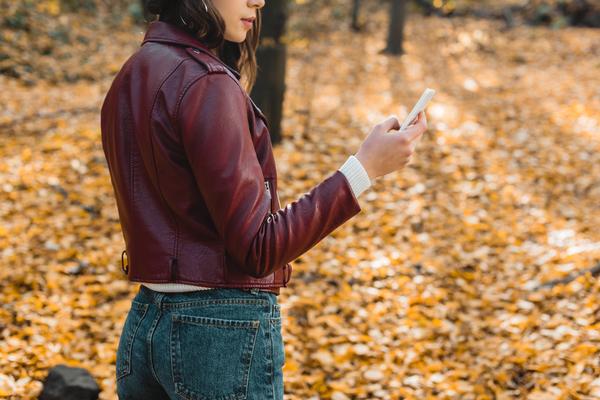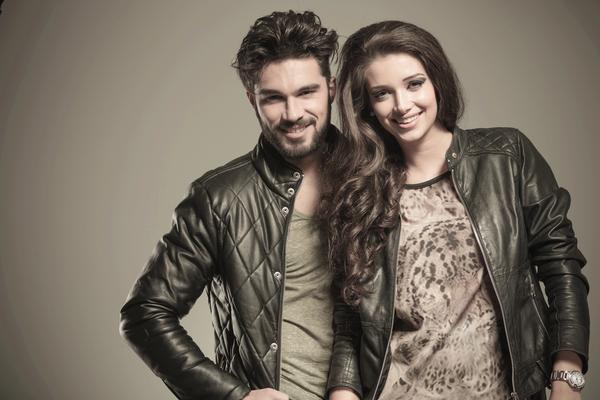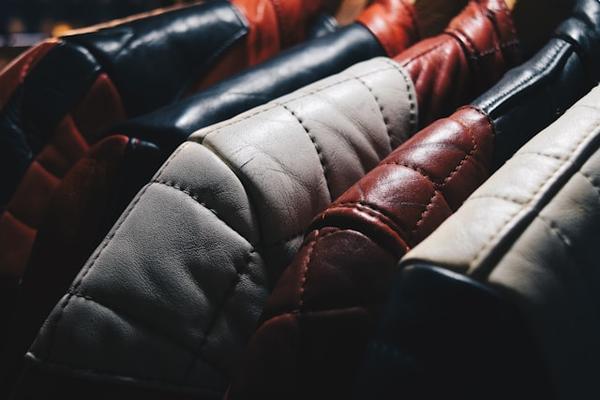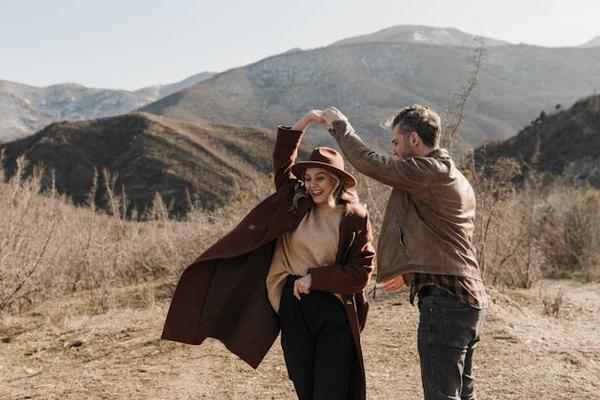Latest News for Jonval Leathers & Furs
The One-Stop Solution for Leather Alterations and Repair: Jonval Leather and Fur in Denver
Leather products are widely admired for their durability, timeless appeal, and the ability to elevate any outfit. From leather jackets to bags and accessories, the demand for leather goods is only growing. However, owning leather items also requires proper care and maintenance. One name that has consistently stood out in Denver as the go-to destination for leather alterations and repair is Jonval Leather and Fur.
Why Choose Jonval Leather and Fur?
Jonval Leather and Fur is a renowned establishment that has been serving the Denver community for over 30 years. With a team of expert craftsmen and artisans, they have built a reputation for their unparalleled expertise and attention to detail when it comes to leather alterations and repair.
Services Offered
Why Trust Jonval Leather and Fur?
Conclusion
When it comes to leather alterations and repair in Denver, Jonval Leather and Fur is the epitome of excellence. With their unmatched craftsmanship, extensive range of services, and commitment to customer satisfaction, they are undoubtedly the one-stop solution for all your leather care needs. Trust Jonval Leather and Fur to preserve and enhance the lifespan of your beloved leather items, ensuring they continue to make a timeless statement for years to come.
Read More...
Why Choose Jonval Leather and Fur?
Jonval Leather and Fur is a renowned establishment that has been serving the Denver community for over 30 years. With a team of expert craftsmen and artisans, they have built a reputation for their unparalleled expertise and attention to detail when it comes to leather alterations and repair.
Services Offered
- Leather Alterations: If you have a beloved leather garment or accessory that no longer fits or needs an update, Jonval Leather and Fur is the place to go. Their skilled tailors can resize, reshape, or modify your leather items to achieve the perfect fit and style. Whether it's shortening a leather jacket's sleeves or tapering the waist of a leather skirt, they offer a wide range of alteration services to meet your needs.
- Leather Repair: Even the most durable leather items can experience wear and tear over time. Jonval Leather and Fur specializes in reviving and rejuvenating damaged leather goods. From repairing ripped seams to fixing zippers and hardware, their expert craftsmen can skillfully restore your valuable leather items to their former glory. Their attention to detail ensures that the repaired portions blend seamlessly with the existing material, maintaining the original look and feel.
- Leather Cleaning and Conditioning: Leather requires proper care to maintain its luster and longevity. Jonval Leather and Fur offers professional leather cleaning and conditioning services to remove dirt, stains, and odors, while also replenishing the leather's natural oils. Regular cleaning and conditioning not only keep your leather items looking their best but also ensure they stay supple and resistant to cracking or drying out.
Why Trust Jonval Leather and Fur?
- Expertise: With decades of experience, Jonval Leather and Fur has honed their skills in leather craftsmanship. Their team of artisans possesses a deep understanding of leather materials and techniques, ensuring that every alteration and repair is executed with precision and expertise.
- Quality Materials: Jonval Leather and Fur sources high-quality materials to match the original leather used in your item. This ensures that the repaired or altered portions seamlessly integrate with the existing material, resulting in a finished product that looks and feels like new.
- Customer Satisfaction: Jonval Leather and Fur takes pride in providing exceptional customer service. They prioritize client satisfaction and work closely with each customer to understand their unique requirements, delivering tailored solutions that meet or exceed expectations.
Conclusion
When it comes to leather alterations and repair in Denver, Jonval Leather and Fur is the epitome of excellence. With their unmatched craftsmanship, extensive range of services, and commitment to customer satisfaction, they are undoubtedly the one-stop solution for all your leather care needs. Trust Jonval Leather and Fur to preserve and enhance the lifespan of your beloved leather items, ensuring they continue to make a timeless statement for years to come.
Are you in the market for a new leather jacket? Look no further than Denver Leather!
Located in the Mile High City, this shop specializes in the sales and service of all leather, fur, and shearling outerwear for both men and women. Whether you're looking for a classic bomber jacket or a trendy moto jacket, Denver Leather has a vast collection to choose from.
In addition to selling leather jackets, Denver Leather offers a range of services including cleaning, repairs, re-lines, re-dye, zipper replacement, sleeve adjustments, shorten-lengthen alterations, complete remodels, and fur coat cold storage. Need to have your leather jacket cleaned and repaired? Denver Leather has got you covered. Want to shorten the sleeves on your favorite shearling coat? No problem. The shop's experienced staff can handle all your leather and fur needs.
One of the unique aspects of Denver Leather is their in-house custom design services. That's right, if you can dream it, the staff at Denver Leather can build it. From classic leather jackets to avant-garde fur coats, Denver Leather can create the perfect outerwear piece to fit your individual style. And with designers like Remy, Andrew Marc, Schott, Scully, Bod, Christensen, Jose Luis, Autunno, and Aston in their collection, you can be sure that your custom piece will be made with the highest quality materials.
Another reason to shop at Denver Leather is the store's commitment to ethical practices. While some shops buy and sell fur, Denver Leather does not. When you shop at Denver Leather, you can feel good knowing that you're supporting a shop that values ethical considerations.
If you're not located in Denver but still want to shop at Denver Leather, fear not! The store's website, denverleather.net, offers a wide selection of leather jackets, fur coats, and accessories. Customers can buy online and have their purchases shipped right to their doorstep. So no matter where you live, you can still enjoy the high-quality products and excellent service that Denver Leather offers.
To see all that Denver Leather has to offer, check out the shop's gallery on their website. From classic leather jackets to timeless fur coats, there's something for everyone at Denver Leather. And with exceptional service and a commitment to ethical practices, shopping at Denver Leather is an experience you won't soon forget.
In conclusion, Denver Leather is a must-visit store for anyone searching for high-quality leather, fur, or shearling outerwear. From cleaning and repairs to custom designs, Denver Leather has the expertise and experience to handle all your leather and fur needs. And with a commitment to ethical practices, shopping at Denver Leather is not only fun and stylish, but also responsible. So why wait? Head to Denver Leather today to find your perfect leather jacket or fur coat.
Read More...
In addition to selling leather jackets, Denver Leather offers a range of services including cleaning, repairs, re-lines, re-dye, zipper replacement, sleeve adjustments, shorten-lengthen alterations, complete remodels, and fur coat cold storage. Need to have your leather jacket cleaned and repaired? Denver Leather has got you covered. Want to shorten the sleeves on your favorite shearling coat? No problem. The shop's experienced staff can handle all your leather and fur needs.
One of the unique aspects of Denver Leather is their in-house custom design services. That's right, if you can dream it, the staff at Denver Leather can build it. From classic leather jackets to avant-garde fur coats, Denver Leather can create the perfect outerwear piece to fit your individual style. And with designers like Remy, Andrew Marc, Schott, Scully, Bod, Christensen, Jose Luis, Autunno, and Aston in their collection, you can be sure that your custom piece will be made with the highest quality materials.
Another reason to shop at Denver Leather is the store's commitment to ethical practices. While some shops buy and sell fur, Denver Leather does not. When you shop at Denver Leather, you can feel good knowing that you're supporting a shop that values ethical considerations.
If you're not located in Denver but still want to shop at Denver Leather, fear not! The store's website, denverleather.net, offers a wide selection of leather jackets, fur coats, and accessories. Customers can buy online and have their purchases shipped right to their doorstep. So no matter where you live, you can still enjoy the high-quality products and excellent service that Denver Leather offers.
To see all that Denver Leather has to offer, check out the shop's gallery on their website. From classic leather jackets to timeless fur coats, there's something for everyone at Denver Leather. And with exceptional service and a commitment to ethical practices, shopping at Denver Leather is an experience you won't soon forget.
In conclusion, Denver Leather is a must-visit store for anyone searching for high-quality leather, fur, or shearling outerwear. From cleaning and repairs to custom designs, Denver Leather has the expertise and experience to handle all your leather and fur needs. And with a commitment to ethical practices, shopping at Denver Leather is not only fun and stylish, but also responsible. So why wait? Head to Denver Leather today to find your perfect leather jacket or fur coat.
How to Choose a Leather Conditioner
Your leather jacket is designed to last for years even with regular wear. The material is incredibly durable, and when the jacket is made by a reputable and high-quality company, you can expect it to look like-new for years to come without trouble. But you’ll still need to condition your leather regularly to keep it supple and hide any scuffs or minor blemishes that might make the leather look older than it is. Choosing the right leather conditioner can be tough if you’re not sure where to start. Here are a few tips to help you make the right choice.
Consider the Type of Leather You Have
Believe it or not, not all leather conditioners are designed to treat all types of leather. Before you pick one up, identify the type or types of leather your jacket is made of. If you have suede, you’ll want to avoid most leather conditioners. But if you have full-grain leather or to-grain leather, you’ll want to look for conditioners that are designed to provide moisture and improve the look of those types of leather. If you’re not sure what your jacket is made of, consider stopping by your local leather repair specialist and asking their advice.
Be Careful About Waterproofing
Leather is resilient. It can get wet and, when properly dried and cleaned, will look just as good as it did before you wore your leather jacket in wet conditions. But many conditioners advertise that they’ll make your jacket waterproof.
Using these conditioners will change the look and breathability of your jacket permanently. Instead of choosing a conditioner that promises to waterproof your leather, choose one that says it will help the leather naturally repel water. This will help you maintain the breathability of your jacket while still making it more comfortable to wear in all weather conditions.
Read up on Reviews
Before you make a purchase, take your time to read up on reviews for each conditioner you’re considering. See what others have to say and check out the pictures they post in their reviews to inspect the quality of the conditioner. If people seem happy with the product, you’ll likely have a similar experience. But if they express concerns about the conditioner, mention off-putting smells, or the pictures show jackets that look less well-kept than they did before the conditioner was used, choose a different product.
Ask Your Leather Care Experts at Jonval
One of the best ways to make sure you’re choosing a leather conditioner that will work for your jacket is to speak with a local leather care specialist like the team at Jonval. They’ll be able to inspect your jacket, identify the key areas of concern, and recommend products that will help you care for your unique piece of clothing.
Keeping Leather in Good Shape Is Easy
Using leather conditioner correctly is one of the easiest ways to keep your jacket looking like new for years to come. If you’re not sure where to start, don’t feel like you have to go it alone. Contact Jonval Leather and Furs and let our team help you find the right conditioner for your jacket.
Read More...
Consider the Type of Leather You Have
Believe it or not, not all leather conditioners are designed to treat all types of leather. Before you pick one up, identify the type or types of leather your jacket is made of. If you have suede, you’ll want to avoid most leather conditioners. But if you have full-grain leather or to-grain leather, you’ll want to look for conditioners that are designed to provide moisture and improve the look of those types of leather. If you’re not sure what your jacket is made of, consider stopping by your local leather repair specialist and asking their advice.
Be Careful About Waterproofing
Leather is resilient. It can get wet and, when properly dried and cleaned, will look just as good as it did before you wore your leather jacket in wet conditions. But many conditioners advertise that they’ll make your jacket waterproof.
Using these conditioners will change the look and breathability of your jacket permanently. Instead of choosing a conditioner that promises to waterproof your leather, choose one that says it will help the leather naturally repel water. This will help you maintain the breathability of your jacket while still making it more comfortable to wear in all weather conditions.
Read up on Reviews
Before you make a purchase, take your time to read up on reviews for each conditioner you’re considering. See what others have to say and check out the pictures they post in their reviews to inspect the quality of the conditioner. If people seem happy with the product, you’ll likely have a similar experience. But if they express concerns about the conditioner, mention off-putting smells, or the pictures show jackets that look less well-kept than they did before the conditioner was used, choose a different product.
Ask Your Leather Care Experts at Jonval
One of the best ways to make sure you’re choosing a leather conditioner that will work for your jacket is to speak with a local leather care specialist like the team at Jonval. They’ll be able to inspect your jacket, identify the key areas of concern, and recommend products that will help you care for your unique piece of clothing.
Keeping Leather in Good Shape Is Easy
Using leather conditioner correctly is one of the easiest ways to keep your jacket looking like new for years to come. If you’re not sure where to start, don’t feel like you have to go it alone. Contact Jonval Leather and Furs and let our team help you find the right conditioner for your jacket.
How to Get Bad Smells Out of Leather Jackets
Leather jackets are designed to be worn and can be worn for decades with the proper care and maintenance. But like any clothing item, the leather can pick up strange or off-putting smells over time. If they’re bad enough, those smells can leave you wondering if you should give your leather jacket away. Luckily, you don’t have to. There are a few easy things you can do to get rid of those bad smells so you can enjoy wearing your jacket again. Here are a few things you can try.
Air It Out
Believe it or not, bad smells can dissipate over time, but you can speed up the process by airing your jacket out. Hang it in a well-ventilated space or set it out in a covered or protected space outside. If you’re hanging your jacket indoors, open the windows and point a fan or two at your jacket. This can help circulate the air and makes it easier for the odors to dissipate. If you’re hanging it outside, try to do so on a lightly breezy day. The breeze will act like the fans you use indoors and will circulate the air around your jacket, gradually removing those smells.
Use Baking Soda
If the odors are really stubborn and airing your jacket out doesn’t work, you may be able to use baking soda to remove the smell. Sprinkle dry baking soda on your jacket and let it sit for about 24 hours. Then, inspect your jacket to see if the odor remains. In most cases, the baking soda should be enough to get rid of even the most stubborn smells. After letting the baking soda sit, simply shake it off outside and vacuum up any residue that remains. If the smell persists, try reapplying the baking soda and repeating the process.
Wrap Your Jacket in Packing Paper
If your jacket just smells a bit musty or stale, baking soda may seem like more trouble than it’s worth. Instead, consider wrapping your jacket in packing paper. This plain brown paper can help absorb odors when left to sit for a week or two. Once you unwrap the jacket, much of the smell should’ve been absorbed by the paper which you can then recycle or throw away.
If you don’t have access to packing paper, you can use newspaper. But the ink can transfer onto the leather if you’re not careful. If you choose to use newspaper, only do so if you have a dark jacket and be prepared to clean your jacket afterward to remove any of the ink left behind.
Clean and Condition the Leather
Believe it or not, some odors can be trapped in the dirt and grime your jacket collects from regular wear. Often, cleaning up that dirt will help get rid of the smell. Use a dedicated leather cleaner that’s safe for your jacket’s material. Then, condition the leather and check it for odors.
Restore Your Leather Jacket the Easy Way
These tips can help you get rid of minor odors on your own, but if the smells are overly strong or you don’t have the time to get rid of odors yourself, let an expert help. At Jonval Leather and Furs, our team can repair and restore your jacket for you. Contact us today to learn more.
Read More...
Air It Out
Believe it or not, bad smells can dissipate over time, but you can speed up the process by airing your jacket out. Hang it in a well-ventilated space or set it out in a covered or protected space outside. If you’re hanging your jacket indoors, open the windows and point a fan or two at your jacket. This can help circulate the air and makes it easier for the odors to dissipate. If you’re hanging it outside, try to do so on a lightly breezy day. The breeze will act like the fans you use indoors and will circulate the air around your jacket, gradually removing those smells.
Use Baking Soda
If the odors are really stubborn and airing your jacket out doesn’t work, you may be able to use baking soda to remove the smell. Sprinkle dry baking soda on your jacket and let it sit for about 24 hours. Then, inspect your jacket to see if the odor remains. In most cases, the baking soda should be enough to get rid of even the most stubborn smells. After letting the baking soda sit, simply shake it off outside and vacuum up any residue that remains. If the smell persists, try reapplying the baking soda and repeating the process.
Wrap Your Jacket in Packing Paper
If your jacket just smells a bit musty or stale, baking soda may seem like more trouble than it’s worth. Instead, consider wrapping your jacket in packing paper. This plain brown paper can help absorb odors when left to sit for a week or two. Once you unwrap the jacket, much of the smell should’ve been absorbed by the paper which you can then recycle or throw away.
If you don’t have access to packing paper, you can use newspaper. But the ink can transfer onto the leather if you’re not careful. If you choose to use newspaper, only do so if you have a dark jacket and be prepared to clean your jacket afterward to remove any of the ink left behind.
Clean and Condition the Leather
Believe it or not, some odors can be trapped in the dirt and grime your jacket collects from regular wear. Often, cleaning up that dirt will help get rid of the smell. Use a dedicated leather cleaner that’s safe for your jacket’s material. Then, condition the leather and check it for odors.
Restore Your Leather Jacket the Easy Way
These tips can help you get rid of minor odors on your own, but if the smells are overly strong or you don’t have the time to get rid of odors yourself, let an expert help. At Jonval Leather and Furs, our team can repair and restore your jacket for you. Contact us today to learn more.
Can You Wash Your Leather Jacket in a Washing Machine?
Leather jackets are some of the most durable pieces of outerwear you can buy. But as with any piece of clothing, they will get dirty after tons of wear. And when your jacket gets dirty, it’s normal to wonder how you can and should clean it. For most people, this means wondering if it’s okay to wash their jackets with the rest of their laundry in a standard washing machine. Here’s what you need to know to keep your leather jacket looking its best.
You Can Toss Your Jacket in the Wash, But You Shouldn’t
Technically, you can toss your leather jacket in a washing machine and run it through the standard cycle, but doing so will wreck the look and feel of your jacket. Washing machines soak every piece of clothing you put in them. Getting your jacket drenched in water and soap can lead to major discoloration of the leather itself. Worse, the agitation the machine produces to remove dirt will damage the leather and could leave your jacket misshapen and almost impossible to wear.
If you’re tempted to wash your leather jacket in your washing machine, don’t. You’ll thank yourself in the future.
Dry Cleaning Isn’t Ideal Either
When clothing isn’t safe to toss in the washing machine, most people assume that it’s okay to dry clean. This may be true for that fancy suit jacket or your wool sweaters, but it’s not the best idea for your leather jacket. Most dry cleaners lack the experience and the supplies needed to safely clean leather. If they use their normal products on your leather apparel, the chemicals and dry cleaning process can wreck your jacket and leave it looking almost as bad as it would if you washed it at home.
Spot-Clean as Needed Instead
The best way to keep your jacket looking great is to spot clean stains and dirt away as needed. Use a dedicated leather cleaning solution and follow the instructions on the label. Be sure to test the product you’re using on an inconspicuous spot like under the collar before applying it to more visible areas. Many leather cleaning products end up causing some discoloration in the leather. This isn’t necessarily bad, and it doesn’t mean your jacket is damaged beyond repair, but it does mean your jacket could look different after you clean it. If you’re not comfortable with the color change, stop what you’re doing and seek help.
Leave the Deep Cleaning to a Leather Care Specialist
Leather jackets can be difficult to clean. That’s why it’s always best to leave the deep cleaning and repair work to an experienced leather care specialist. They have the tools and training needed to restore your jacket without damaging the leather or the look and feel you’ve come to love.
Let Jonval Leather and Furs Help
If you’re worried about a buildup of dirt and grime on your leather jacket, don’t try to clean it on your own. Instead, leave the cleaning to the experts at Jonval Leather and Furs. Our team will get your jacket looking like new in no time. Contact us today for more information.
Read More...
You Can Toss Your Jacket in the Wash, But You Shouldn’t
Technically, you can toss your leather jacket in a washing machine and run it through the standard cycle, but doing so will wreck the look and feel of your jacket. Washing machines soak every piece of clothing you put in them. Getting your jacket drenched in water and soap can lead to major discoloration of the leather itself. Worse, the agitation the machine produces to remove dirt will damage the leather and could leave your jacket misshapen and almost impossible to wear.
If you’re tempted to wash your leather jacket in your washing machine, don’t. You’ll thank yourself in the future.
Dry Cleaning Isn’t Ideal Either
When clothing isn’t safe to toss in the washing machine, most people assume that it’s okay to dry clean. This may be true for that fancy suit jacket or your wool sweaters, but it’s not the best idea for your leather jacket. Most dry cleaners lack the experience and the supplies needed to safely clean leather. If they use their normal products on your leather apparel, the chemicals and dry cleaning process can wreck your jacket and leave it looking almost as bad as it would if you washed it at home.
Spot-Clean as Needed Instead
The best way to keep your jacket looking great is to spot clean stains and dirt away as needed. Use a dedicated leather cleaning solution and follow the instructions on the label. Be sure to test the product you’re using on an inconspicuous spot like under the collar before applying it to more visible areas. Many leather cleaning products end up causing some discoloration in the leather. This isn’t necessarily bad, and it doesn’t mean your jacket is damaged beyond repair, but it does mean your jacket could look different after you clean it. If you’re not comfortable with the color change, stop what you’re doing and seek help.
Leave the Deep Cleaning to a Leather Care Specialist
Leather jackets can be difficult to clean. That’s why it’s always best to leave the deep cleaning and repair work to an experienced leather care specialist. They have the tools and training needed to restore your jacket without damaging the leather or the look and feel you’ve come to love.
Let Jonval Leather and Furs Help
If you’re worried about a buildup of dirt and grime on your leather jacket, don’t try to clean it on your own. Instead, leave the cleaning to the experts at Jonval Leather and Furs. Our team will get your jacket looking like new in no time. Contact us today for more information.




